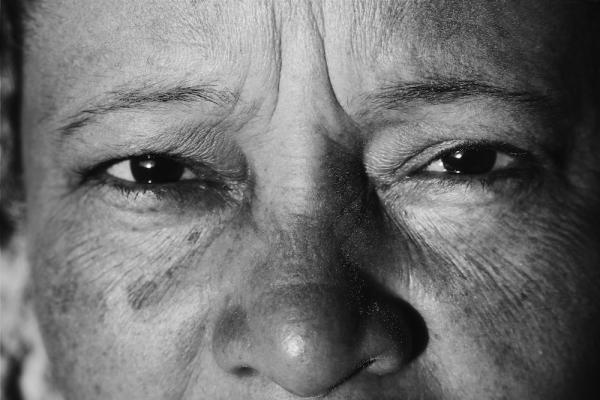In these post-resurrection days of celebration and mystery, Christians across time, language, and culture share a common greeting:
“Christ is risen!”
“He is risen indeed!”
This Easter, a pastor and friend shared that in some Orthodox Christian communities, a third phrase is added:
“I can see him in your face.”
In this coronavirus pandemic, adding that response seems more essential than ever.
What faces we see, either in person or in our hearts, carry a sacred and saving significance. Those of us with the luxury of being able to shelter in place because we have adequate space, who can maintain physical distance because there’s no need to be crowded, and who can wash our hands because we never have to think about soap and hot water, can exchange post-Easter greetings in safety, probably on Zoom. We treasure those bonds with one another in a socially isolated time.
But so many other faces face stark vulnerability, helpless anxiety, and the dread of death that seems nearer to their communities than to others.
COVID-19 has revealed the pre-existing conditions of U.S. society: a health care system sickened by market forces and heartless profit, excluding millions, and an economic system corrupted by raging income inequality, with 40 percent of adults lacking $400 in savings for an emergency, much less a pandemic. And we lack coverage, as a nation, for these deadly pre-existing conditions.
See the faces of the Navajo family 40 miles from Gallup, N.M., living without running water, making choices between dishes and hands. The African-American postal worker and father of three in Milwaukee who is two to three times more likely to die from COVID-19 than his white coworker. The Latino restaurant worker in Orlando’s Magic Kingdom now without money, health insurance, or hope. He has a bad cough and serious chest pain. If he tests positive, he has no money to pay a hospital bill, even if a bed is available. Can we see Christ in these faces?
Or the migrant in India, where national sheltering in place means crowding into homeless, wandering masses. The Syrian refugee crammed into a tent hoping for a hygiene kit including soap to defend against the onslaught of this indiscriminate virus. The mother in Harare, Zimbabwe, laid off from cleaning at a tourist hotel, now with no money to feed her children, and only prayers left to sustain them. Can we see him in their faces?
The Orthodox Church now travels through their Holy Week, moving toward Easter Sunday, or Pascha, celebrated on April 19 this year. Its ancient theology first deepened my theological understanding of Christ’s death and resurrection. Instead of a transactional act on Golgotha to satisfy an angry God, the love of God in Christ confronts the power of sin and death, breaking into its stronghold (“He descended into hell, or the dead” from the Apostles Creed) and emerges triumphant in resurrected power, glory, and presence.
My favorite icon of the resurrection pictures Christ bursting forth from the tomb, holding the hands of two figures whom he is lifting out of their coffins of death. They are Adam and Eve. The meaning is that all humanity is being liberated through the power of the resurrected Christ, as the apostles and biblical personalities in the icon look on. It’s a cosmic redemption, even as Paul proclaimed, “reconciling all things.”
But how does this powerful, redemptive, healing promise of the resurrection become real in the face of the COVID-19 pandemic? We know this hope is never just for the end of history, but breaks forth into this history, into the present. Yet, where does this begin to take hold?
One portal opens when we see the face of Christ in each of those rendered most vulnerable and most likely to be inflicted by the deadly, silent, invisible spread of this virus. We see Christ holding each hand, wanting to lift them out of places of death. We see Christ’s complete identification with all humanity, and his presence with them, his face reflected through them. This vision then prompts continual, creative acts of solidarity, local and global, confronting the power of sin and death. That is one way the power of the resurrected Christ, breaking free from the tomb, continues to break into the world, so loved by God. “If you have done it unto the least of these, you have done it unto me.”
Of course, this takes aggressive policies and practices, as well as sacrificial service by nurses, doctors, and truck drivers, and massive efforts marshalling financial and human resources in global solidarity. But it begins by what faces we see.
So, our post Easter greeting in these days of COVID-19 can be:
“Christ is risen.”
“He is risen indeed.”
“I can see him in your face.”
Got something to say about what you're reading? We value your feedback!







